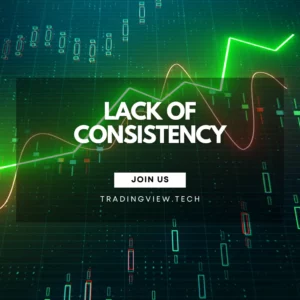In the fast-paced world of financial markets, where every tick on the chart can seem like an opportunity, many traders fall into a common but dangerous trap: overtrading. Overtrading refers to the act of making too many trades in a short period of time, often driven by emotion rather than strategy. This behavior is not only counterproductive but also one of the most overlooked factors behind consistent trading losses. While it might appear that more trades equate to more chances at profit, the reality is that frequent trading often leads to increased transaction costs, emotional fatigue, and a gradual erosion of trading discipline.
What makes overtrading especially problematic today is the evolution of modern trading platforms. With just a few clicks or taps, trades can be executed instantly from anywhere in the world. Real-time data, flashy interfaces, constant alerts, and even gamified experiences have transformed trading from a methodical process into an activity that can feel more like playing a video game. This accessibility and stimulation can easily push traders—especially beginners—into a cycle of compulsive trading, where decisions are made not based on solid analysis, but on impulse.
Moreover, the illusion of control plays a major role. The more trades one places, the more it may feel like they’re “doing something” to influence outcomes. In reality, excessive activity in the markets often stems from a lack of confidence, poor risk management, or emotional turbulence. Understanding and recognizing the signs of overtrading is crucial for anyone serious about long-term success in the markets.
Psychological Triggers Behind Overtrading
At the core of overtrading lies human psychology. Emotions—more than logic—often drive trading decisions, especially in high-stress environments. Several common psychological triggers fuel overtrading, and understanding them is essential for developing control and self-awareness as a trader.
1. Fear of Missing Out (FOMO):
In today’s hyper-connected world, the fear of missing out on a profitable trade can be overwhelming. When traders see price action moving rapidly or hear others talking about big gains, they may feel pressured to jump into the market without proper analysis. This reactive behavior often leads to poor entries, overexposure, and trades that don’t align with a sound strategy.
2. Revenge Trading:
Suffering a loss can trigger a powerful emotional response. For some, this leads to revenge trading—a desperate attempt to win back lost money as quickly as possible. In these moments, rational thinking is replaced by frustration and ego. The trader may increase position sizes, abandon their plan, and take impulsive risks, often compounding the initial loss with even greater losses.
3. Boredom and the Need for Action:
Markets don’t move in a straight line, and periods of low volatility or sideways action are normal. However, some traders equate inactivity with missed opportunity. Instead of waiting patiently for high-quality setups, they begin to trade out of boredom—just to feel involved or productive. These trades typically have weak justifications and are entered without clear signals, making them more likely to fail.
4. Overconfidence After Wins:
Ironically, winning streaks can also lead to overtrading. After a few successful trades, some traders start believing they can’t lose. This false sense of invincibility can lead to increased risk-taking, deviation from strategy, and an uptick in trade frequency, all of which can quickly undo previous gains.
5. The Addiction to Activity:
For some individuals, trading becomes more than just a financial pursuit—it becomes a form of emotional stimulation. The constant excitement, the highs and lows, and the adrenaline of being in the market can mimic the addictive patterns seen in gambling. In such cases, trading is no longer about strategic decision-making but about satisfying a psychological craving for action.
Recognizing these emotional triggers is the first step toward combating overtrading. Once traders become aware of the internal forces driving their behavior, they can begin to build the discipline and emotional control needed to trade with intention and clarity.
Consequences of Overtrading
The consequences of overtrading can be both immediate and long-term, affecting not only a trader’s financial performance but also their mental and emotional well-being. While the occasional unnecessary trade may not seem harmful in isolation, consistent overtrading compounds negative effects that can ultimately derail a trader’s progress and profitability.
1. Increased Transaction Costs:
One of the most direct and quantifiable downsides of overtrading is the accumulation of trading fees. Every trade—regardless of its size or outcome—incurs costs, whether in the form of commissions, spreads, or slippage. When trading frequency increases without clear strategic justification, these costs quickly add up, quietly eating into potential profits and even turning a winning strategy into a losing one over time.
2. Deteriorating Performance:
Overtrading often leads to poor trade quality. When a trader floods the market with impulsive entries, the likelihood of making well-timed, high-probability trades diminishes. Rather than waiting for optimal setups that align with a proven strategy, overtraders act on emotion or noise, resulting in a lower win rate and inconsistent results. What begins as an attempt to “do more” often ends up achieving less.
3. Mental and Emotional Burnout:
The constant mental strain of analyzing markets, managing positions, and dealing with losses can be exhausting. Overtrading exacerbates this pressure by keeping the trader in a heightened state of alert almost continuously. Over time, this can lead to decision fatigue, reduced focus, and emotional volatility—conditions that make strategic thinking nearly impossible. Burnout not only affects trading but can spill into other areas of life, impacting health and relationships.
4. Erosion of Capital:
Perhaps the most damaging consequence of overtrading is the gradual, and sometimes sudden, loss of trading capital. When a trader is caught in a cycle of emotional or compulsive trading, risk management often goes out the window. Poorly timed entries, excessive position sizing, and disregard for stop-losses all contribute to capital drawdowns. In worst-case scenarios, accounts can be wiped out completely—not because the market was unfavorable, but because the trader was undisciplined.
In essence, overtrading is like a slow leak in a boat—it might not sink the vessel immediately, but if left unchecked, it will inevitably lead to disaster. Recognizing this risk is crucial for any trader aiming for sustainable success.
Recognizing the Signs of Overtrading
Before traders can fix the problem of overtrading, they must first become aware that it’s happening. Unfortunately, many don’t recognize the warning signs until the damage has already been done. The ability to self-diagnose overtrading tendencies is a critical step in developing trading maturity and discipline.
Here are some of the most common indicators that a trader might be overtrading:
1. Frequent Deviations from the Trading Plan:
One of the clearest signs of overtrading is the regular abandonment of a pre-established strategy. If a trader often takes trades that don’t align with their criteria or skips important steps in their analysis just to “get into the market,” it’s a red flag that they are operating on impulse rather than discipline.
2. Trading Without Clear Setups:
Entering trades without a well-defined reason—such as vague price action, gut feelings, or social media tips—suggests that trading decisions are being made emotionally. High-quality trades should be backed by a consistent strategy, not by hope or hunches.
3. Constant Screen-Watching:
While monitoring the markets is part of trading, excessive screen time can indicate a compulsive need to stay engaged. Traders who find themselves glued to the charts all day, searching obsessively for opportunities, are often not being productive—they’re simply feeding the urge to take action.
4. Chasing the Market:
Overtraders often jump into moves that have already played out, trying to catch momentum too late. This usually stems from FOMO and results in entering positions at poor price levels, increasing the risk of reversals and losses.
5. Increased Trade Frequency After Losses or Wins:
A noticeable uptick in trading activity following a string of losses (revenge trading) or wins (overconfidence) is another telltale sign. In both cases, decisions are driven by emotional reactions instead of calculated strategy.
6. Neglecting Risk Management:
Overtraders frequently ignore position sizing rules, skip stop-loss placements, or risk more than usual in an attempt to maximize gains or recover losses. This type of behavior is unsustainable and highly dangerous to one’s capital.
By learning to spot these behaviors early, traders can take corrective action—whether that means stepping away from the market, revisiting their trading plan, or implementing stricter rules for entries and exits. Recognizing the problem is the first step toward regaining control.
Strategies to Prevent Overtrading
Overcoming overtrading requires more than simply recognizing its symptoms—it demands the consistent application of structure, discipline, and self-awareness. Fortunately, there are several practical strategies that traders can implement to build better habits and reduce impulsive behavior in the markets.
1. Stick to a Written Trading Plan
A well-defined trading plan acts as a compass in the often chaotic environment of financial markets. It should outline specific criteria for trade entries and exits, acceptable risk per trade, position sizing rules, and the markets or instruments being traded. Writing this plan down—not just keeping it in your head—creates a physical reference point. Reviewing it regularly before trading sessions can serve as a psychological barrier against acting on emotion or market noise.
2. Set Daily and Weekly Trade Limits
Establishing a cap on the number of trades per day or week helps enforce discipline and encourages traders to be selective. Limiting trades to only the best setups not only improves trade quality but also reduces emotional fatigue. These limits can be adjusted based on experience and performance but should be honored strictly to build discipline.
3. Use a Trading Journal
Journaling is one of the most underrated tools in a trader’s arsenal. By recording every trade—including the reasoning behind it, emotional state at the time, outcome, and post-trade reflection—traders gain deep insight into their behavioral patterns. Over time, this documentation reveals trends that may not be obvious in the moment, such as repeated impulse trades or consistent rule violations. Reviewing a journal weekly can be a powerful method for accountability and growth.
4. Take Scheduled Breaks
Trading is mentally taxing, especially during volatile periods. Taking regular breaks—both short-term during the day and longer breaks over weeks or months—can help reset the emotional system. Stepping away from the charts allows traders to gain perspective, reflect on recent behavior, and avoid burnout. Even during active trading days, a short walk or break from the screen can prevent boredom-driven trades.
5. Use Alerts and Automated Tools
Modern platforms offer tools such as price alerts, conditional orders, and automated risk controls. Using these features can help traders avoid staring at screens constantly and eliminate some of the temptation to trade unnecessarily. When used properly, automation can support a trader’s strategy rather than hinder it.
6. Implement a “Cool-Down” Rule
After a loss—especially a large or emotional one—many traders are tempted to jump back in and “fix” the mistake. Instituting a personal rule to take a 10- to 30-minute break, or to avoid trading for the rest of the day after a certain loss threshold is hit, can help prevent revenge trading and reduce emotional interference.
Ultimately, preventing overtrading is about creating friction between impulse and action. The more deliberate and structured a trader’s process is, the harder it becomes for emotion to dictate behavior.
Conclusion and Call for Discipline
In the world of trading, success is not reserved for those who make the most trades, but for those who make the best trades. Overtrading is a silent threat that can slowly chip away at even the most talented trader’s edge, draining both capital and confidence. It often disguises itself as productivity or commitment, but in truth, it is the enemy of consistency and rational decision-making.
The antidote to overtrading lies in the cultivation of patience, self-awareness, and unwavering discipline. A trader who can resist the urge to act on every market movement, who understands that sitting on their hands is sometimes the most profitable move, is already ahead of the game. Quality over quantity is not just a saying—it is a principle that separates professionals from amateurs.
By adhering to a solid trading plan, enforcing limits, reviewing behavior through journaling, and taking care of one’s mental well-being, traders can build the resilience needed to navigate the markets with confidence and clarity. Every trade should have a purpose, and every action in the market should reflect a well-thought-out decision—not a knee-jerk reaction.
The path to sustainable trading is not paved with constant action, but with intentional, well-timed precision. Choose discipline. Choose patience. Choose to trade smarter, not more.



